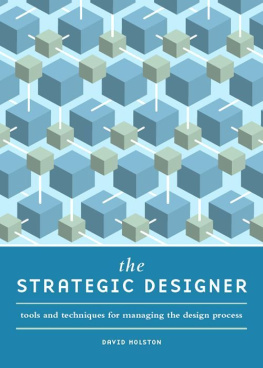TO KIM, BETHANY, AND JENNA
Men rush toward complexity; but they yearn for simplicity.
G. K. CHESTERTON
T his is a simple book about a complex topic, but dont be fooled. Beneath the simplicity lies a deep and profound message. Complexity is often necessary, but unnecessary complexity complicates our lives. How can we strike the proper balance? Ah. Start with this delightful book.
I first encountered Dan Ward in 2008 when we corresponded about an early edition of this book. I was working on my own book about complexity and it soon became clear that we shared similar viewpoints. An officer in the U.S. Air Force, Dan was working to streamline the way that complex projects are developed within the military. In 2012 he wrote that I was just offered a position in D.C. They want me to help lead an initiative to implement my FIST [Fast, Inexpensive, Simple, Tiny] concept across the U.S. government.... Neat. This meant that he didnt just have a book, he had a method. Moreover, he was being given an opportunity to implement the plan in major projects.
FIST, his procedure for developing projects quickly and efficiently, requires that things be less physically complex, less cognitively confusing, and less complicated. In 2014, FIST was renamed F.I.R.E. (for Fast, Inexpensive, Restrained, and Elegant) and published as a book by HarperCollins. This book provides a deeper look at the simple/elegant portion of his framework.
Naturally, the two books support one another. F.I.R.E. offers lessons highly relevant to The Simplicity Cycle. Large projects all tend to fail. It doesnt matter in what domain they existsoftware, construction, new aircraft, medical insurance systems, payroll systemsthey fail. Ward offers a simple solution: dont do them. With the time and money allocated for one large project, do numerous small ones. Do them Fast and Inexpensive, with Restraint and Elegance: F.I.R.E.
Its a well-known principle, but it goes against the nature of organizations that wish to solve all their problems with one project. In consumer markets, it encourages the disease I call featuritis. In industry, its bloat. The military calls it requirements creep. Whats the alternative? F.I.R.E. How do we avoid unneeded complexity and manage to maintain simplicity? Thats the focus of this book.
In The Simplicity Cycle, Ward examines the normal trajectory of the design of systems. Consider how good a system might be, perhaps with some measure of goodness. To increase goodness, complexity must be increased, because zero complexity generally means zero goodness. At some point however, the complexity starts getting in the way, perhaps by making the system far too difficult to design, or to construct, or to manage. Perhaps it is now too difficult to comprehend. Whatever the reason, once the design goes past a certain point, increasing complexity begins to make things worse. But it is often necessary to reach the point of overcomplexity in order to get the balance right. As Ward puts it:
Patience and diligence are keys to avoiding premature optimization. First, we need to gain the necessary tools, talents, pieces, parts, and components... and only then can we apply them in the appropriate degree and trim out the extraneous.
But simplifying too soon is just as bad as complexifying for too long.
Ward suggests several ways of reducing unneeded complexity. One is simply to begin removing components and see how well the system functions without them. If it still functions well, those components were unnecessary. Keep doing this until as much as possible has been removed while still yielding acceptable goodness. Does this sound too simple? Too obvious? Well, it is still resisted. Ward describes the result this way:
Resistance to simplification is based on the belief that every additional feature, part, and function represents an improvement. It also assumes that the accumulated additions made things better from an overall system perspective.
Such assertions are misguided and maybe a little arrogant.
Why arrogant? Because they assume everything we ever added was a good idea. Why maybe? Because those additions may indeed have been good. But getting rid of them might be even better.
A second method is through restructuring. A cube is less complex than a collection of squares, he points out, because it is one object, not six. It is also more good because we can do more with a 3-D object than a 2-D object. This is similar to the transformation of airline cockpits from many separate, physical displays into a smaller number of well-integrated visual displayswhat is today called the glass cockpit. It wasnt just a matter of combining things; it required rethinking them, reconceptualizing them. The result was that complexity went down while goodness went up. Similarly, taking six squares and using them to form a cube reconceptualizes it as a new object, where we no longer think of it as having six separate parts but rather as a single, integrated whole. Complexity goes down, goodness goes up.
The two books, F.I.R.E. and The Simplicity Cycle, can each be read on its own, but for people involved in the design and implementation of complex projects, they form a powerful pair. For anyone wanting to embrace the mantle of simplicity, this book, The Simplicity Cycle, is essential.
Making something simple is difficult. Simplicity is actually quite complex.
Don Norman
Silicon Valley, California
Author of Living with Complexity and The Design of Everyday Things, Revised and Expanded
CONTENTS
- CHAPTER 1
Soda, Swordsmen, and Road Maps - CHAPTER 2
The Journey Begins - CHAPTER 3
The Journey Continues - CHAPTER 4
Using the Simplicity Cycle - CHAPTER 5
On Hard Work and Design - CHAPTER 6
The Doldrums, They Happen - CHAPTER 7
Travelogues and Archetypes
Guide
C omplexity is a two-liter bottle of soda.
Doled out in reasonable quantities and at appropriate times, its not bad. In fact, it can be pleasant as an occasional accompaniment to a balanced meal or as a refreshing treat on a hot day. Unfortunately, were guzzling gallons of the stuff every day and its killing us.
The fact that humans have a taste for sweetness is neither a genetic flaw nor a psychological disorder. Its a survival trait, passed down from our ancestors who needed to find high concentrations of calories in order to stay alive and thus developed an affinity for sugar. This preference became a problem in the modern era, where we have easy access to unlimited quantities of cheap, industrial-strength concentrations of carbonated high-fructose corn syrup, packaged in attractively colored cans and bottles. Instead of survival, we ended up with obesity and diabetes.
Similarly, humans gravitate toward complexity, in our technologies and religions, our laws and relationships, because simplicity is so often inadequate to our needs. We require a certain degree of complexity in our lives, just as we require a certain number of calories each day. Accordingly, we add layers, gizmos, features, functions, connections, and rules to the things we create in an attempt to make them more exciting, more effective, or otherwise better. This preference, too, becomes a problem when it spirals out of control and produces industrial-strength concentrations of complexity that surpass our needs by multiple orders of magnitude. Press 1 if you agree. Press 2 for a list of other options. Press 3 to return to the main menu. Please note, the options have changed.












